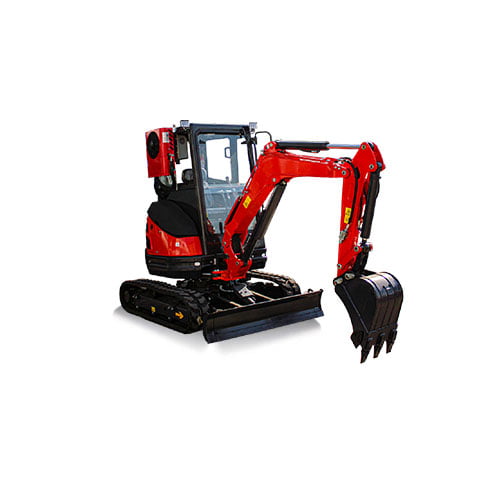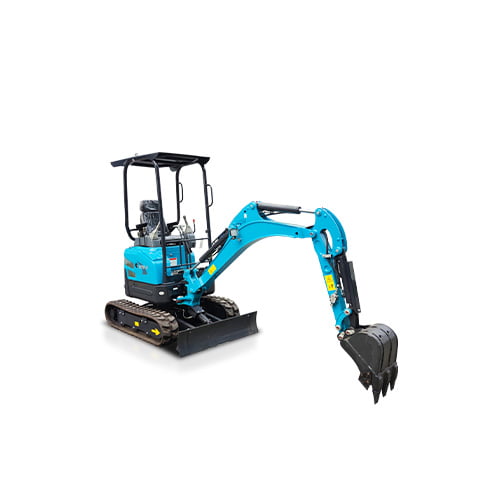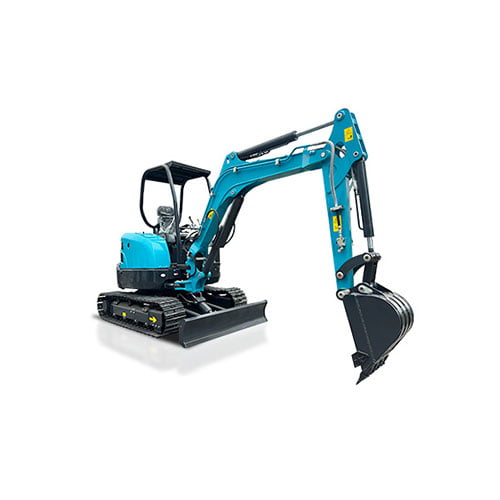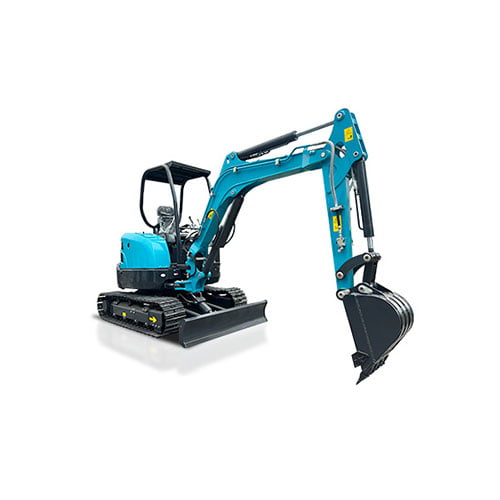Introduction

Mini backhoe excavators have transformed the landscaping industry, offering unparalleled versatility and efficiency in various projects. This blog delves into their multifaceted benefits, applications, specifications, and environmental impact, providing a comprehensive guide for professionals and enthusiasts alike.
Understanding Mini Backhoe Excavators
Mini backhoe excavators are compact yet robust machines that combine the functionalities of a loader and an excavator. Ranging from 1 to 6 tons in weight, these machines are designed to navigate and operate in tight spaces where larger equipment would struggle. Their hydraulic systems enable precise movements and efficient power distribution, crucial for tasks such as digging, trenching, lifting, and loading materials.
Key Features and Specifications
Mini backhoe excavators are characterized by their compact size, typically equipped with tracks or wheels for mobility. They feature powerful diesel engines or electric motors, depending on the model, ensuring sufficient power for various landscaping tasks. Hydraulic attachments such as buckets, augers, and grapples enhance their versatility, allowing operators to switch between tasks seamlessly.
Advantages in Landscaping Applications
Versatility and Maneuverability
One of the primary advantages of mini backhoe excavators is their ability to maneuver through confined spaces with ease. This makes them invaluable for residential landscaping projects, where access to backyard areas or narrow passages is limited. Their compact size and articulated designs enable operators to navigate around obstacles and work in proximity to structures without causing damage.
Efficiency in Digging and Trenching
Despite their size, mini backhoe excavators excel in digging and trenching tasks. They can efficiently excavate soil, dig foundations, and create trenches for irrigation systems or utility lines. Their hydraulic systems provide precise control over digging depth and bucket movements, ensuring accuracy and minimizing the need for manual labor.
Cost-Effectiveness
While the initial investment in a mini backhoe excavator may be higher than traditional landscaping tools, the long-term cost-effectiveness is undeniable. These machines reduce labor costs by accelerating project timelines and increasing productivity. Moreover, their versatility means fewer equipment rentals or additional machinery purchases for different tasks, further saving on operational expenses.
Environmental Impact
Reduced Carbon Footprint
Mini backhoe excavators are designed with environmental sustainability in mind. Compared to larger construction equipment, they consume less fuel and produce fewer emissions per operation hour. This makes them a preferred choice for environmentally conscious landscaping companies and homeowners looking to minimize their carbon footprint during projects.
Minimal Site Disturbance
Their compact footprint and precise operation minimize disturbance to the surrounding landscape. This is particularly beneficial for maintaining existing vegetation, preserving delicate terrain, and minimizing disruption to client properties or public spaces. The reduced ground pressure of mini backhoe excavators also helps prevent soil compaction, promoting healthier soil conditions.
Case Studies and Real-World Applications
To illustrate their effectiveness, consider a case where a mini backhoe excavator was used to transform a small backyard into a functional outdoor living space. Despite limited access, the machine successfully excavated and leveled the area, installed a drainage system, and created pathways—all within a short timeframe and without damaging existing structures or plants.
Comparison of Mini Backhoe Excavators
| Feature | Mini Backhoe Excavator | Larger Excavator |
|---|---|---|
| Size | Compact, suitable for tight spaces | Larger, requires more space |
| Maneuverability | Excellent | Limited in confined areas |
| Fuel Efficiency | Higher | Lower |
| Emissions | Lower | Higher |
| Digging Depth | Moderate | Greater |
Maintenance Tips for Longevity

Regular Inspections and Lubrication
To ensure optimal performance and longevity, mini backhoe excavators require regular inspections and maintenance. This includes checking hydraulic fluid levels, inspecting tracks or tires for wear, and lubricating moving parts. Scheduled maintenance by qualified technicians helps prevent costly breakdowns and ensures the machine operates at peak efficiency.
Operator Training and Safety Measures
Proper training for operators is essential for maximizing the benefits of mini backhoe excavators. Training programs should cover equipment operation, safety protocols, and maintenance procedures. Emphasizing safe operating practices not only protects operators but also extends the lifespan of the machine and reduces downtime due to accidents or misuse.
Conclusion
In conclusion, mini backhoe excavators represent a significant advancement in landscaping technology, offering unmatched versatility, efficiency, and environmental benefits. Whether for creating intricate garden designs, installing drainage systems, or preparing foundations, these compact machines continue to redefine what is possible in landscaping. Their ability to navigate tight spaces, reduce environmental impact, and enhance productivity makes them indispensable tools for modern landscaping professionals.
FAQ
Q:What size projects are suitable for mini backhoe excavators?
A:Mini backhoe excavators are ideal for small to medium-sized projects such as residential landscaping, trenching for utilities, and light construction tasks. Their versatility allows them to tackle a wide range of tasks efficiently.
Q:Are mini backhoe excavators easy to transport?
A:Yes, their compact size and lightweight design make mini backhoe excavators relatively easy to transport compared to larger construction equipment. They can be towed on trailers behind trucks or transported using specialized equipment trailers.
Q:How do mini backhoe excavators compare to larger excavators in terms of performance?
A:While mini backhoe excavators may not match the digging depth or lifting capacity of larger excavators, they excel in maneuverability and versatility. They are particularly advantageous in urban or residential settings where space is limited and maneuvering around obstacles is required.




